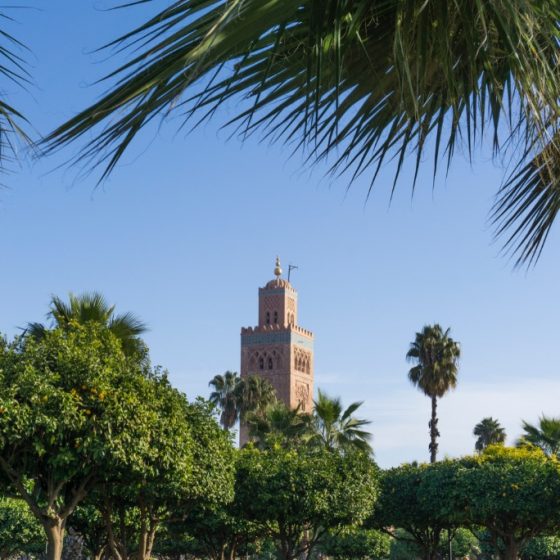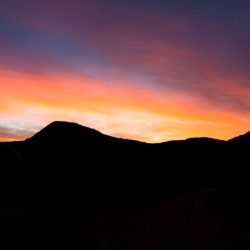Tarangire National Park in One Second:
- Tarangire National Park is less busy than the Serengeti & Ngorongoro Crater
- The perfect National Park if you love baobab trees & elephants
- The best timing to go is between June and October
- Beautiful changing landscapes from lush swamps to wide grasslands
Can’t believe it has been already 3 months, how time flies! Exactly three months ago I had the amazing opportunity to visit one of my favorite African countries once more: Tanzania. Thanks to my job at Evaneos, I had the opportunity to meet our local partners on the ground. But before we had to start working, Annette, one of our local agents, invited us to show us her favorite National Park in Tanzania: Tarangire.
I was beyond the moon when she proposed the Tarangire National Park because I wasn’t able to visit the park on my first encounter with Tanzania. Before my arrival in this place, I was counting the days, because I missed the wildlife and the unique landscapes that you can only find in Africa. After 2 years without it, I was slowly losing it and needed my dose of this marvelous continent.

My arrival in the middle of the night in Tanzania, however, didn’t go as planned because the airline had managed to lose my luggage. Hakuna Matata, I told myself, after all, I just arrived in Africa, nothing could ruin my day. So after a short shopping tour at 2 am, to buy the bare necessities, like this unique t-shirt that you can see on the right, we headed to the lodge.
After only 2 hours of sleep, we began our brief Tanzania road trip, which led us at first to the unique Ngorongoro crater. A beautiful park, especially because of its unique setting, I personally, however, find it a bit overloaded. Too many cars on very limited space, which is why I decided to present you a great alternative to the busy Crater and the Serengeti.
The Tarangire National Park in Tanzania is often overshadowed by the other two popular national parks, even though it has plenty to offer.
Tarangire National Park in a nutshell
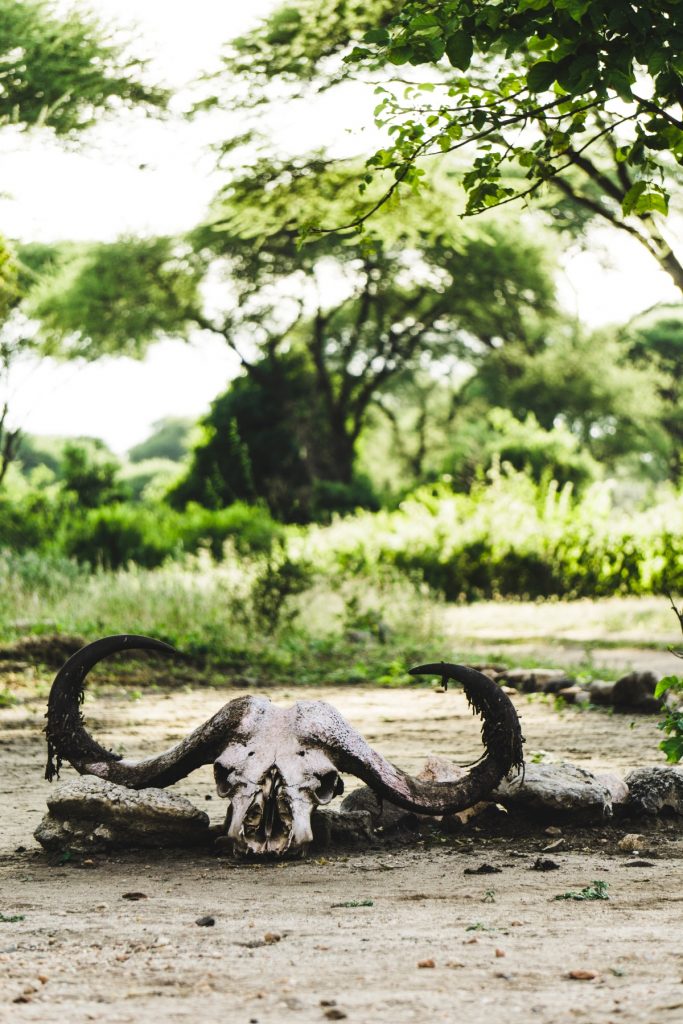
- Established: 1970
- Area: 2,850 square kilometers (Size of Luxembourg)
- Nearest city: Arusha (120km)
- Best time to visit: June-October
- Known for: Elephants & Baobabs
Why you should go to the Tarangire National Park

Elephants, elephants, elephants
First of all, it is Tanzania’s National Park with the second-highest concentration of wildlife and especially elephants you will see in plenty of numbers. The only time I saw that many elephants on a single day was in Botswana.
In the dry season (June-October) the park has apparently the world’s highest concentration of elephants in a single national park. I didn’t count, but I guess that during the day I saw around 300 of these gentle giants. So if you are a huge fan of these magnificent animals, Tarangire National Park has to be on your bucket list.
Nevertheless, there are also plenty of other animals to discover. There are for example more than 700 lions that you can search for or if you are a bird enthusiast you will be delighted by the 450 different species that you can find here.
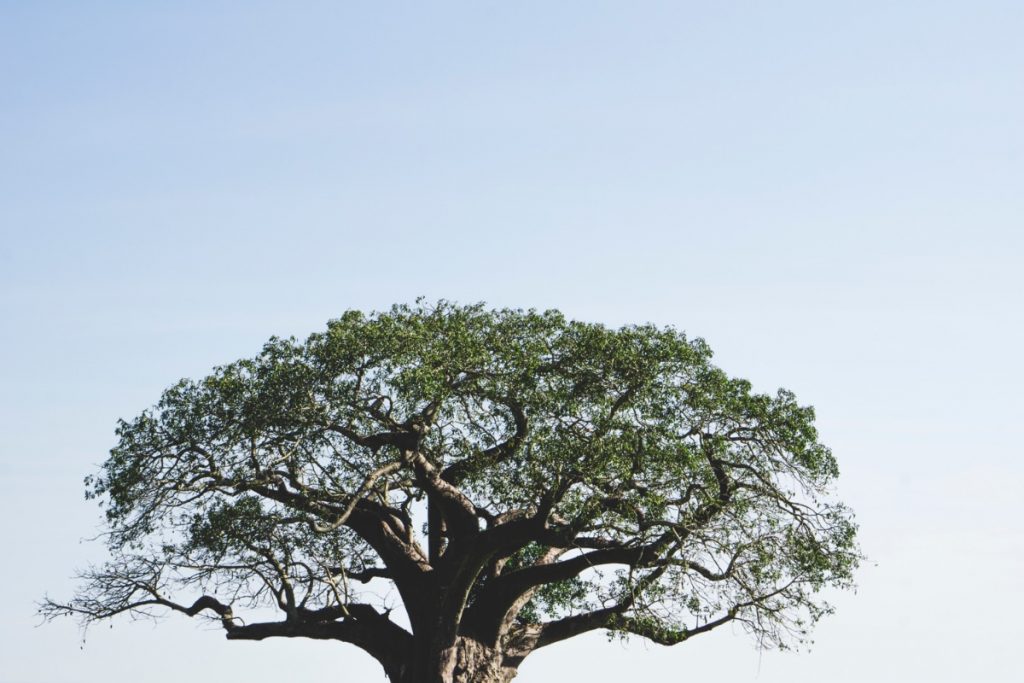
Baobabs
The second biggest highlight after elephants are the massive baobab trees (Adansonia digitata) that can be found in the entire national park. They do not only have a marvelous look but also serve as
That’s why in the park you will find many trees that partially lost their bark because animals like elephants used them as a reliable source of water.
Furthermore, our local guide Geoffrey also explained to us that the tree is often also referred to as the cursed tree, because the tree looks like it is upside down, with the roots reaching to the sky.
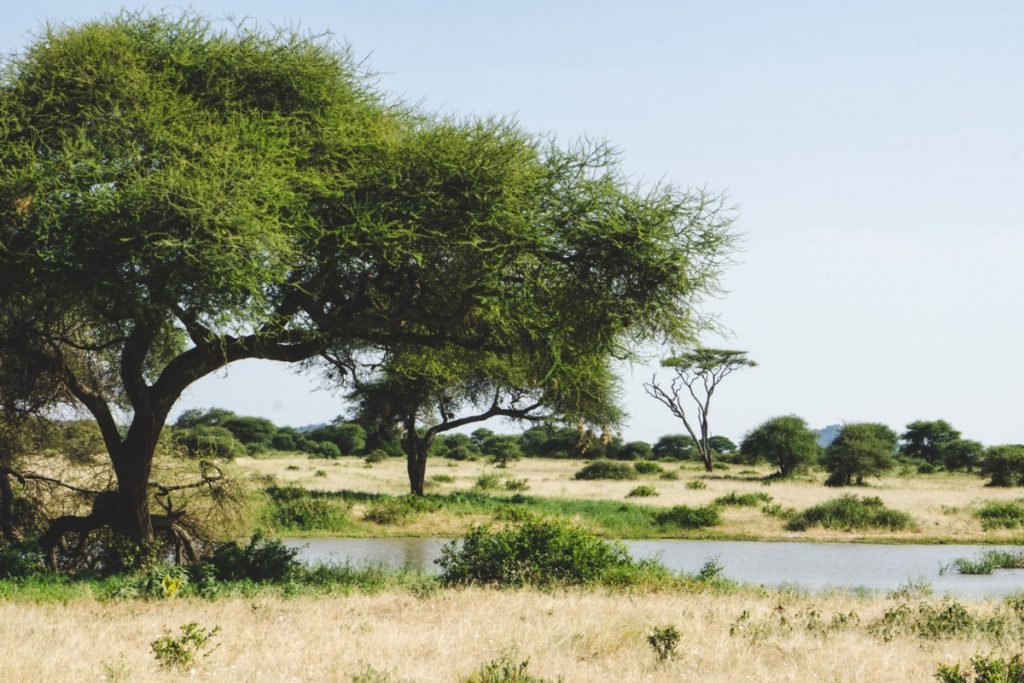
Africa scenery
Tarangire National Park has a very beautiful variety of African landscapes to offer. During the day we passed all sorts of vegetation and sceneries.
From thick thorn bushes to lush green swamps, to classical African savanna, to winding rivers.
Driving through Tarangire gives you the feeling that you drive to numerous different national parks, which is the major reason why it never gets boring on the same game drive.
My day in Tarangire National Park

After our exciting day in the Ngorongoro Crater, we stopped over at the Sangaiwe Tented Lodge to spend the night right at the border of the National Park.
On arrival at the camp, we already got a glimpse of what to expect for the next day, because we were greeted by a group of elephants.
The lodge is situated right on a hill with a beautiful view of the surroundings and the tented lodges had amazing comfort, while still allowing us to listen to the sounds of nature.
Next morning we started with a tiny walk uphill to greet the rising sun and after finishing our breakfast it was finally time to explore Tarangire.
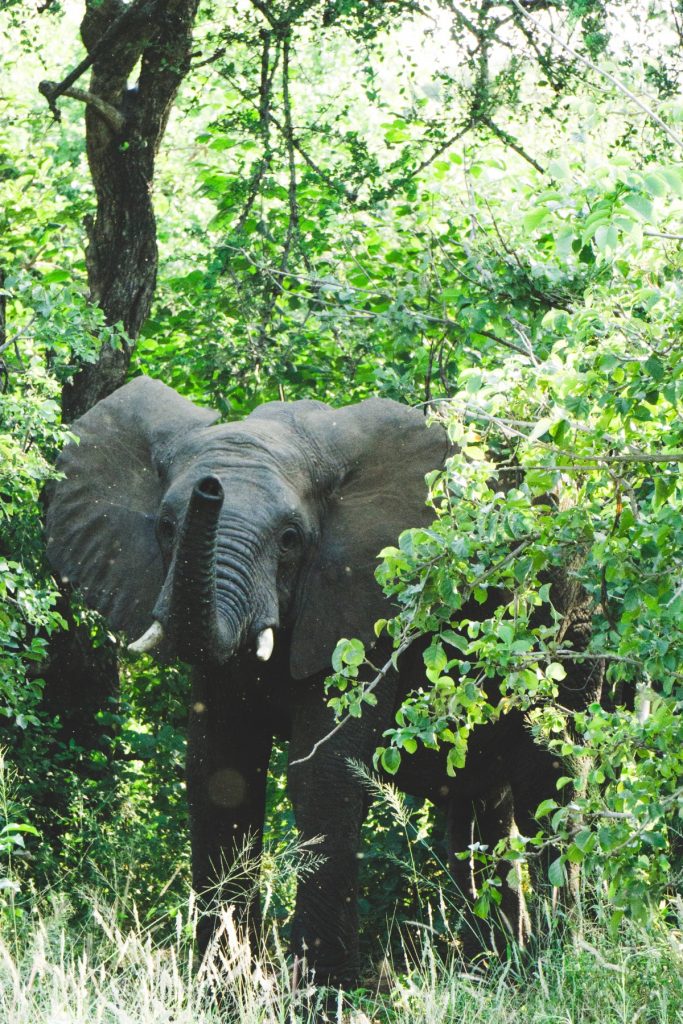
However, after entering the park it took us more than an hour to spot the first animals.
The
But neither did we see some animals, due to the thick thornbush vegetation.
You now can imagine how happy we were when we finally saw our first elephant of the day. He was standing around 10 meters away from us, but he probably sensed that we had a bad start into this game drive, so he decided to wave at us.

We continued and slowly the vegetation started to change and we had a clearer view of the surroundings.
Slowly the first baobabs showed up and so did the animals.
Shortly after our elephant encounter, we found a group of Impalas and a giraffe with her baby.
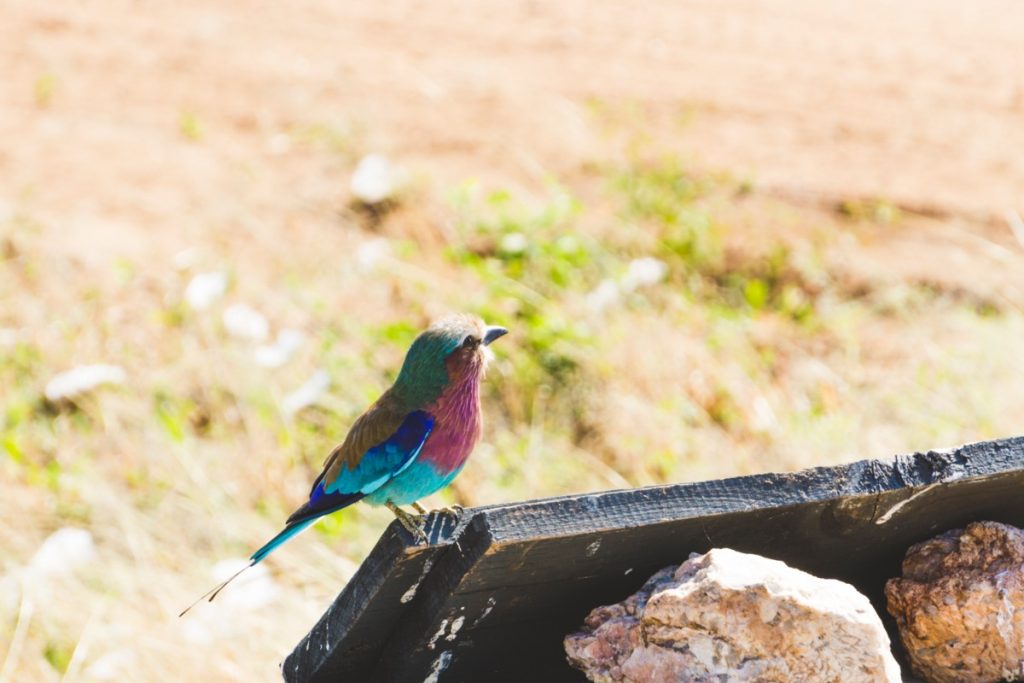
Going further inside the park, we also discovered more and more birds. We managed to find numerous ostriches, grey crown cranes, hornbills, and other smaller, colorful birds.
Tarangire was indeed a paradise for bird enthusiasts. Before my first Africa trip in 2017, I was never a huge bird enthusiast, but two Australian mates that I met on the trip managed to change my perspective.
They taught me that those big mammals are definitely exciting, but that at the same time on a game drive you should also
Kind of reminded me of Mufasa’s speech from the Lion King that every animal has to play their part in the circle of life.
Anyways, on the game drive in the Tarangire National Park, I found myself being totally amazed by the entire variety of animals this park has to offer.
“They taught me that those big mammals are definitely exciting, but that at the same time on a game drive you should also
lookout for the smaller animals. Kind of reminded me of Mufasa’s speech from the Lion King that every animal has to play their part in the circle of life.”
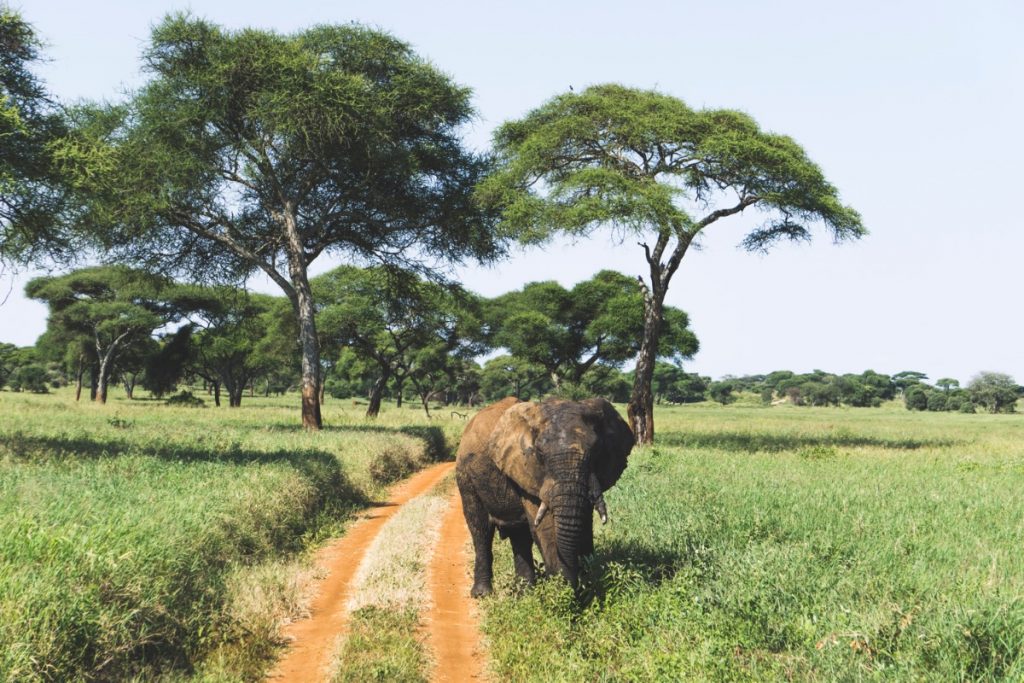
After a few birds encounter it was time again for an elephant and lucky as we were we didn’t have to wait long, because only a few minutes later a huge bull was blocking our way.
A single elephant with an amazing African landscape in the background, a hobby wildlife photographers dream.
I probably took around 100 pictures of just this one elephant. But there was still more to
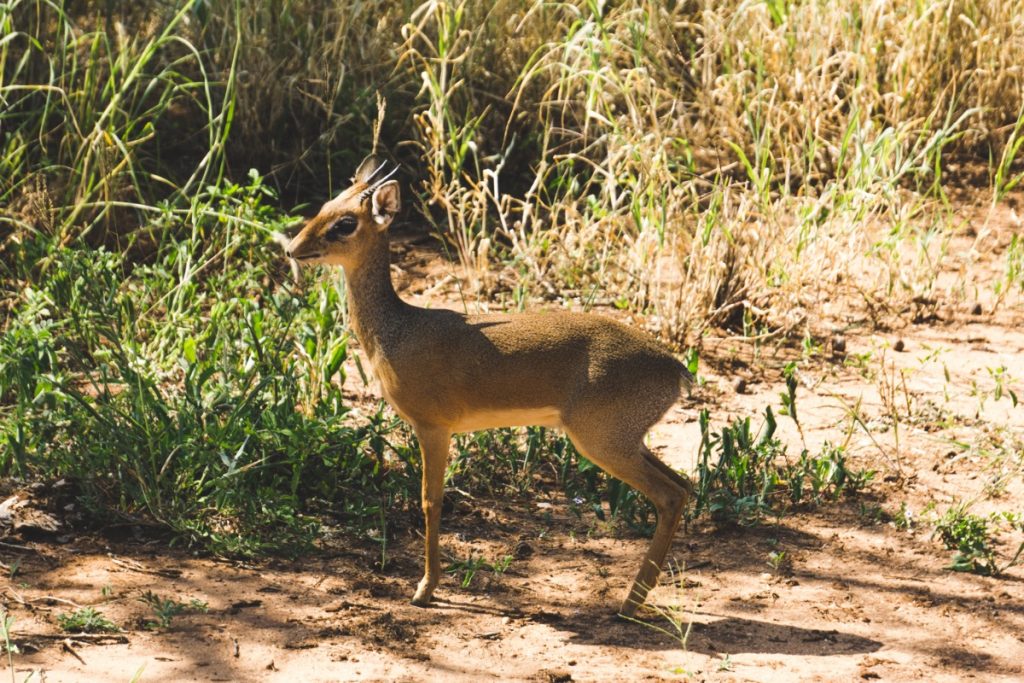
After driving through some thick bushes again we spotted something small and fast running through the bushes, it was a Dik-dik.
Dik-diks are one of the smallest antelopes in the world and they only get 40cm high. Hence, it is really hard to see them in the wild and even harder to take a good picture of them. Once again we got pretty lucky.
Fun fact about them is that they are one of the animals that actually have a sort of toilet, a spot they continuously come back to, to do their business. Nature is fascinating sometimes.
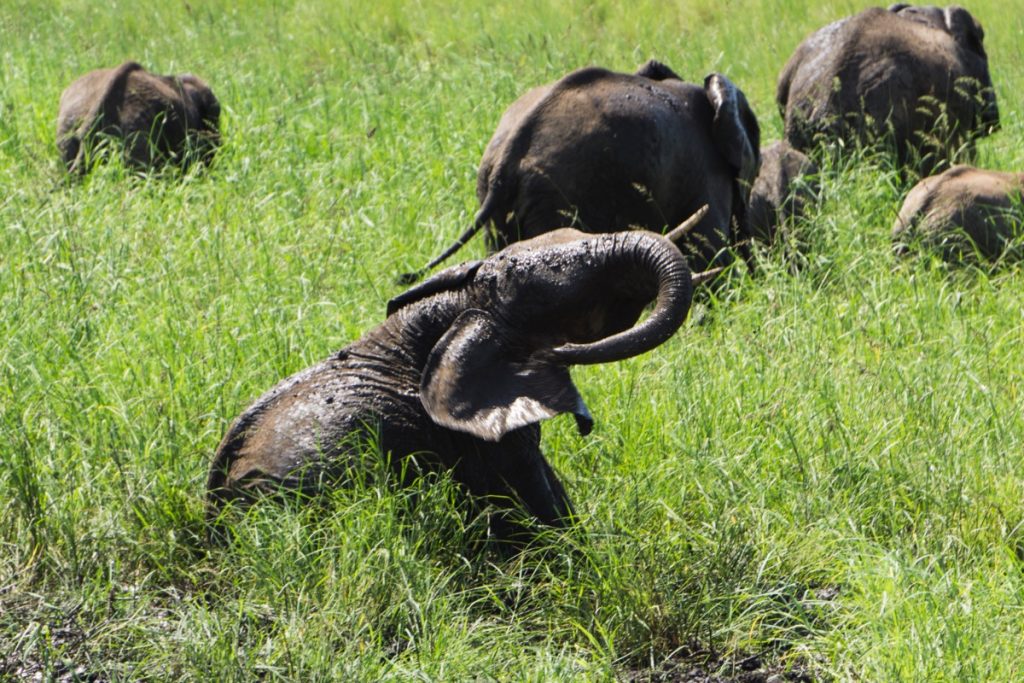
We continued and now it was elephant time, we almost didn’t see any other animals anymore. Perfect time for another photo shooting.
The majority of the elephants in the park are spending their day time close to the water, to feed on all the lush greens and to take some refreshment on hot days.
It was a pure joy to observe them in such a beautifully calm setting. They didn’t mind us and continued with their beauty program.
Seeing so many elephants in one spot, especially young ones, gave me some hope for the species. We can still turn this around.
Before the foundation of the national park, this same area was a hunting ground and in less than 50 years they have managed to create a safe haven for all species.
“Seeing so many elephants in one spot, especially young ones, gave me some hope for the species. We can still turn this around.”

We remained on the river banks to see if we could spot some other animals as well and after driving a few minutes we found a Giraffe that was on its way to the river.
Giraffes are very vulnerable when they are drinking because they have to bend down a lot, due to the enormously long neck.
This exposed position enables predators to more easily attack the giraffe and bring it down, which is what probably happened to the poor giraffe that I once saw in Botswana, which you can read more about here.
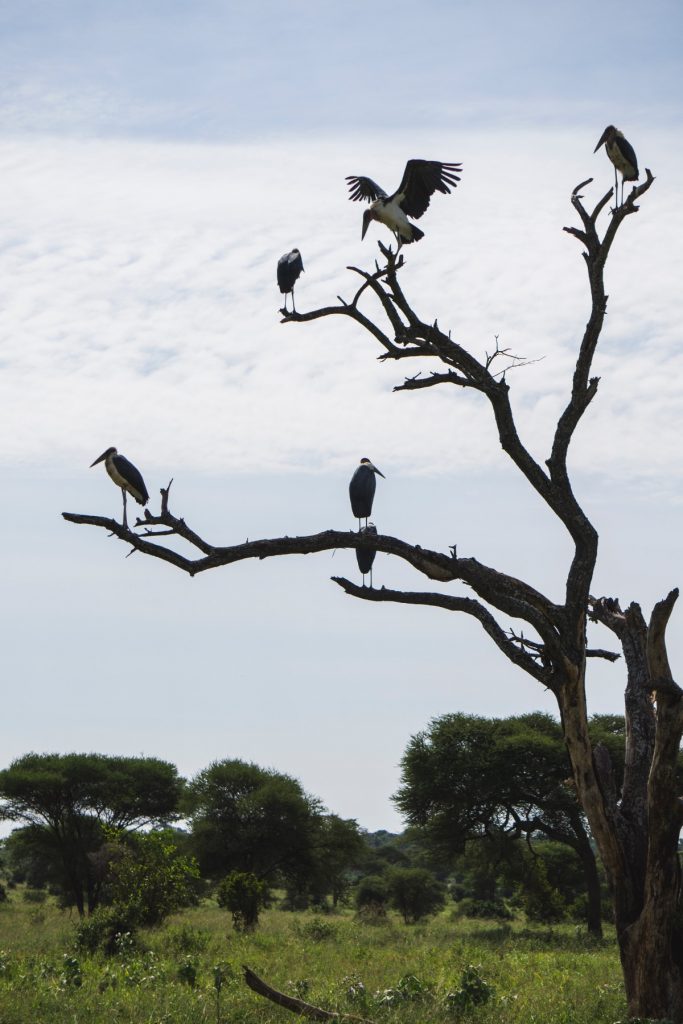
Our time in Tarangire slowly was coming to an end and we still didn’t manage to see one of the 700 lions that call this national park their home.
We were very eager to find them which is why I constantly checked the shady spots under the trees, I should have checked the top of the trees.
We were driving on a dusty road when we saw plenty of marabou storks and vultures in the trees, usually an indicator for a kill laying around.
Nevertheless, both birds have amazing eyesight and can look for kilometers, so just because you see some on a tree does not necessarily mean that the kill is right around the corner, but we knew that we were on the right track.
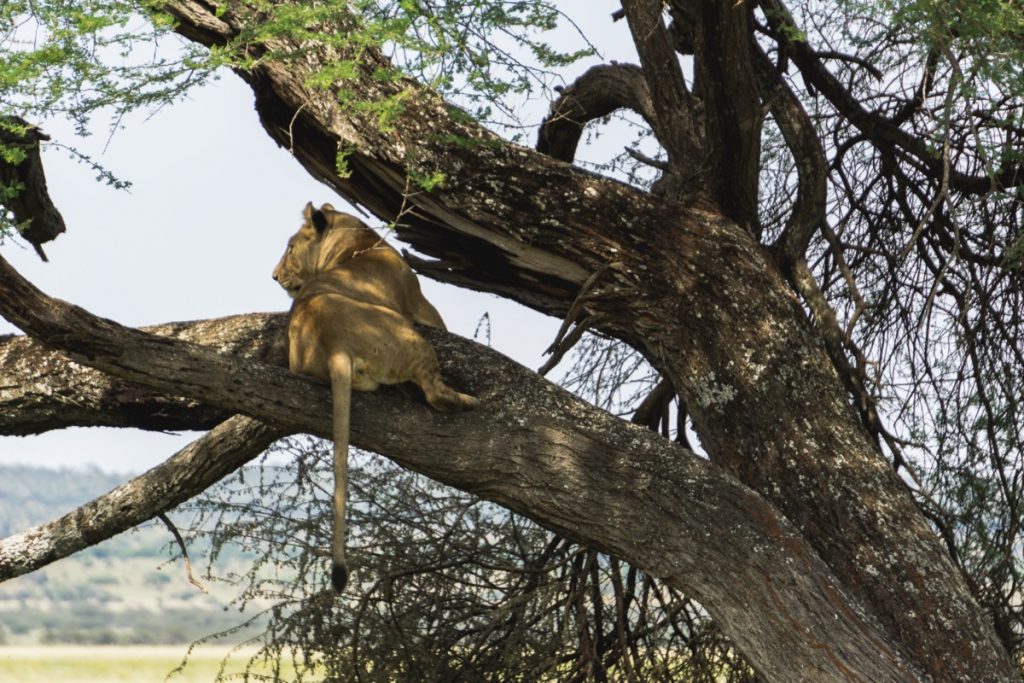
Geoffrey slowed down the car and we passed by some neighboring trees. I continued to look down, but then Geoffrey spotted a lioness in a treetop.
I was searching the entire time on the wrong level, I thought to myself, no wonder I didn’t spot any lion earlier.
Indeed, we got pretty lucky because climbing trees is not something a lion does all the time. For me, it was the first time seeing one like this, after I guess around 40 game drives, so definitely something special.
Tarangire was truly spoiling us today. After a few minutes with the adventurous lioness, we continued on our way to the exit, it was time to leave.
“I was searching the entire time on the wrong level, I thought to myself, no wonder I didn’t spot any lion earlier.”
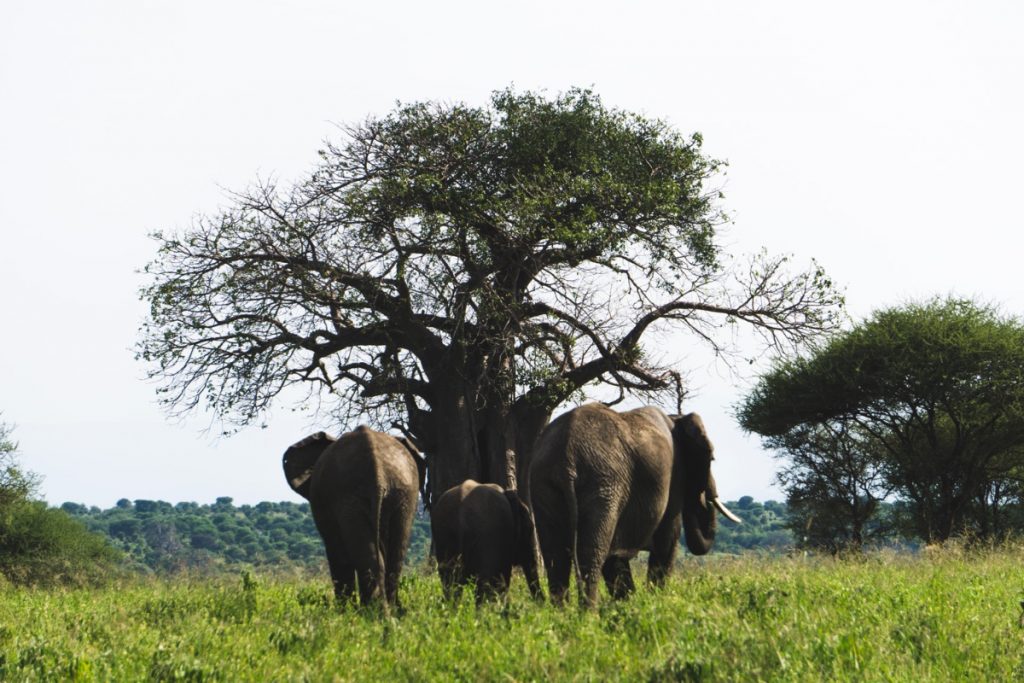
Tarangire National Park is famous for elephants & baobabs, but we still didn’t see both of them together. But that was also about to change.
Just a couple of hundred meters before the exit gate we found an elephant herd that was enjoying the shade of a huge baobab tree.
You can’t write this stuff, the perfect final act for this
Thank you again, Annette, and especially Geoffrey to show us this gem of Tanzania and making this day possible. Tarangire National Park, you captured my heart and I am certain that I will be back.
I hope you liked this article and you find it interesting. Let us know in the comment section. If you love elephants as much as I do and want to help to some extent, I can recommend


